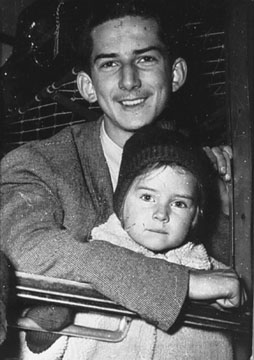Slovenia is a country in central Europe. It is bordered by Croatia, Hungary, Austria, Italy, and the Adriatic Sea. In the 2016 Canadian census, 40, 475 people reported being of Slovenian origin (13, 690 single and 26, 785 multiple responses).
Migration and Settlement
Very few Slovenians settled in Canada before 1920. Those who did arrived mainly via the United States. Among them was missionary Frederic Baraga (1797-1868), who in 1857 became the first bishop of Sault Ste Marie.
The first wave of Slovenian immigration to Canada was organized by travel agencies actively seeking healthy young men to work on farms in Manitoba and Saskatchewan and on railways in British Columbia. Once they fulfilled their employment obligations, many Slovenian immigrants moved to towns. Before the Second World War (WWII) an estimated 4600 Slovenians lived in Canada. The most vibrant Slovenian community was in Kirkland Lake, Ontario, where in 1933 the first independent Slovenian benefit society (Bled Mutual Benefit Society, named after one of Slovenia's picturesque Alpine lakes) was established.
The geographical distribution of Slovenians changed drastically during and after WWII. This was partly due to the resettlement of Slovenians from the mining towns of northern Ontario to southern Ontario farms such as Beamsville and St. Catharines. Also, between 1947-51, many political refugees arrived and after a year of obligatory work began to settle mainly in urban areas, especially Toronto and Hamilton.
The third wave of Slovenian immigrants came to Canada between 1951-60. This group was mostly made up of family members of pre- and postwar immigrants, as well as young men and women who were unable to find employment in their homeland. Between 1960-70, many more Slovenians came to Canada for economic reasons. Most of them settled in Ontario.
Social and Cultural Life
With the growth of Slovenian communities, social and economic structures began to develop. By 1945 the Bled Mutual Benefit Society had 13 branches throughout Canada. In the 1950s, two Slovenian credit unions were established in Toronto. Skilled craftsmen founded their own businesses, mainly in residential construction. Likewise, Slovenian professionals established their private practices to cater to the various needs of their people. Cultural associations were founded in all major Slovenian settlements. Slovenian national homes and summer camps were built. While in smaller towns, a single club served the needs of local Slovenian community, in Toronto different social, cultural and political associations began to emerge. The Vincentian Fathers, arriving in 1949, began to publish a religious monthly magazine, Bozja beseda (The Word of God), which still serves to unite Canadian Slovenians who are predominantly Roman Catholic. In 1954 the first Slovenian church was built in Toronto, followed by these in Etobicoke, Hamilton, Montreal and Winnipeg. The parishes became the centre of religious, cultural and educational activity.
Founded in 1990 in Toronto, the All-Slovenian Cultural Committee represented most Slovenian organizations in southern Ontario and co-ordinated various activities nationwide. The Canadian Slovenian Congress, a member of the World Slovenian Congress, was founded in 1989 to promote the interests and aspirations of Slovenians in Canada and around the world. The Slovenian Canadian Council represented a few cultural and political organizations founded by political immigrants, including the Slovenian National Federation which published the monthly newspaper Slovenska drzava (Slovenian State).
Slovenians' pride in their culture is shown in choral singing, folklore dancing, polka music, theatre, as well as writing and fine arts. Soccer, volleyball, lawn bowling and hunting are popular sports. The community support various charitable projects in Canada and abroad, such as Slovenian old-age homes in Toronto and Hamilton. According to the 2016 census, 10, 295 people reported speaking Slovene as a mother tongue language (first language learned).

 Share on Facebook
Share on Facebook Share on X
Share on X Share by Email
Share by Email Share on Google Classroom
Share on Google Classroom




